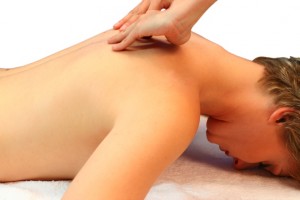 During an intense workout, the human body undergoes all sorts of different processes. Almost every system in the body chips in and focuses its efforts on keeping the muscles working properly. It is an inevitability that the body gets beat up during exercise. But that’s where protein and massages come into play.
During an intense workout, the human body undergoes all sorts of different processes. Almost every system in the body chips in and focuses its efforts on keeping the muscles working properly. It is an inevitability that the body gets beat up during exercise. But that’s where protein and massages come into play.
First off, protein helps build and repair the broken down tissues from the intense workout. That’s why everyone these days is so protein-driven! Secondly, massages don’t affect muscle strength, but have been proven to optimize recovery. There are two different ways to use massages to help speed up recovery: self-massage (self-myofascial release) or professional massage.
A pre-exercise massage is a useful way to increase or decrease the stimulation of nerve cells, thus keeping the ligaments, tendons, and muscles loose and flexible. Blood circulation throughout the body is also enhanced during a massage. It’s important to note that proper stretching and warming up is still necessary before beginning exercise.
A post-exercise massage is extremely beneficial by allowing the mind and body to relax. It also improves recovery time by allowing the byproducts from the metabolism to be carried away from the muscles more efficiently. Research has proven that a post-exercise massage can speed up recovery time twice as fast as regular rest, mainly due to the improved blood flow and nutrient distribution.
Self-massage (self-myofascial release) is a great way to take advantage of the same benefits of an actual massage without the cost and time commitment. The only disadvantage is the relaxation factor. Below is a list of self-massage movements that you can do to maximize results and minimize soreness. Good luck!
Self Massage Movements:
